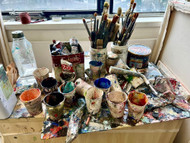ARTIST INTERVIEWS: LYDIA STONEHOUSE & MEGAN WILLOW HACK - WINNERS OF THE CASS ART x PHOENIX STUDIO AWARD
15th May 2023
At Cass Art we continue to support the next generation of artists through various prizes, awards and opportunities. Each year Cass Art, in partnership with Phoenix Art Space and University of Brighton, sponsors a free studio space for a year for graduating students.
We caught up with Lydia Stonehouse and Megan Willow Hack, winners of the 2022 award to find out how they are getting on, and hear more about their work and plans for the future.
LYDIA STONEHOUSE
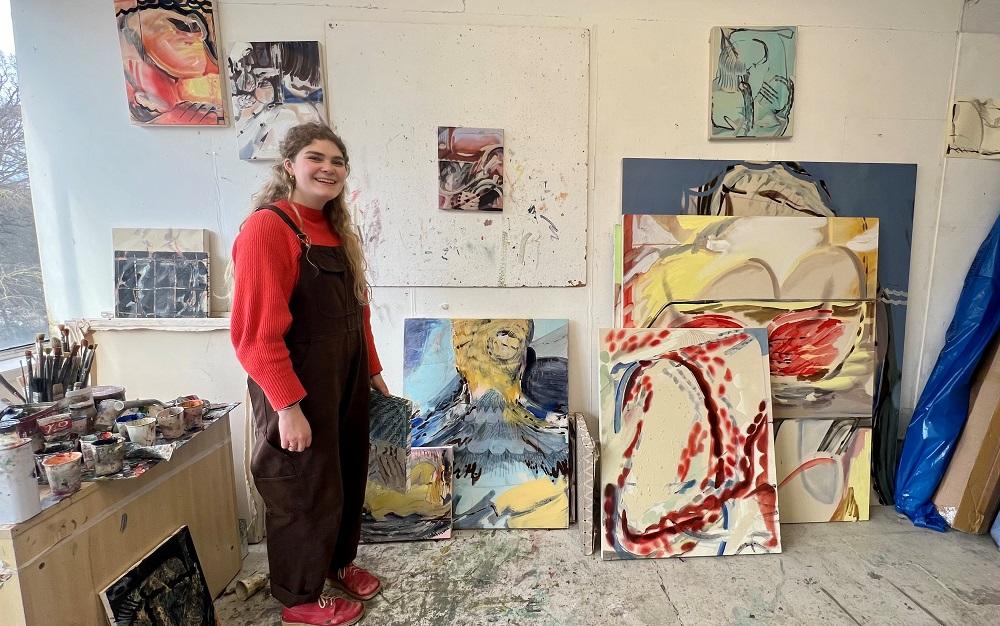
Hi Lydia! Firstly, congratulations on receiving the Cass Art & Phoenix Studio Award! How did you feel when you heard you’d been selected by the panel?
Hi! Thank you so much. It honestly was one of the best moments of the past few years, which due to studying in the pandemic have at times been challenging. I still feel very much the same as I did the day I found out I’d been selected - such a huge sense of gratitude!
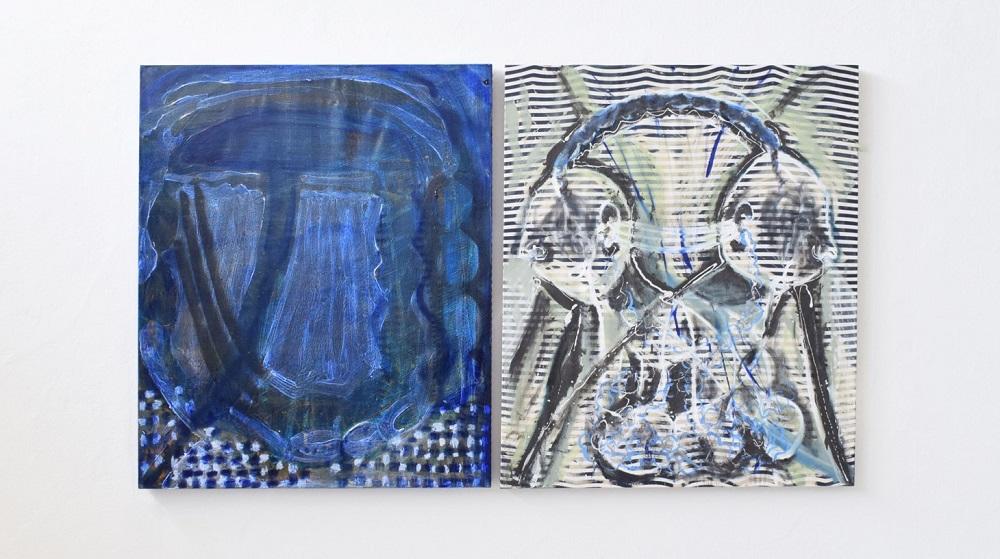
Can you tell us a bit about your creative journey so far? You studied Fine Art Painting at The University of Brighton, tell us about your time there and how your work evolved throughout your course.
The exciting thing about embarking on a 3 year course in painting is not knowing where you’ll end up, and instead having to trust the process and embrace the continual making of work in the studio as a way of getting to where your practice is taking you. I have very fond memories of spending long days in the studio making as many paintings as I could to work through various ideas and truly get to grips with handling paint.
Visually my work has changed quite a bit from the paintings I was making even up to the end of the 2nd year. I was moving through phases of figuration in search of ways to articulate moments of bodily awareness in relation to the outside world, which in essence felt very sensory and therefore hard to grasp and translate into the confines of straightforward pictorial imagery. It took a while to get to the place where I was able to give up enough control to let the materiality of painting and consequently more formal qualities such as colour, line and texture be the elements to work together to visually describe these sensory everyday moments I was, and remain, so interested in depicting.
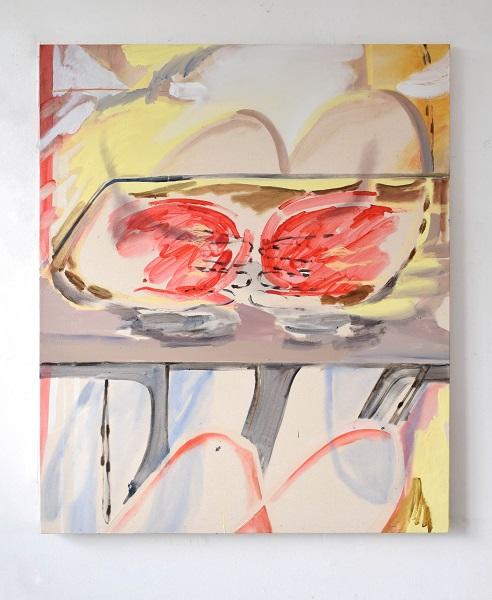
You’re about halfway through your studio residency now, how are you enjoying the space and being part of the creative community at Phoenix Art Space?
The past 6 months in the studio have been really good. I have loved having the space to make the largest paintings I’ve made to date and have found Phoenix Art Space to be a real creative haven and place of encouragement. There’s something about being a part of a space full of people all working away, often out of pure devotion to their practice and driven by the innate human need to creatively express which feels very hopeful to me as I find my feet as a practicing artist out in the ‘real world’.
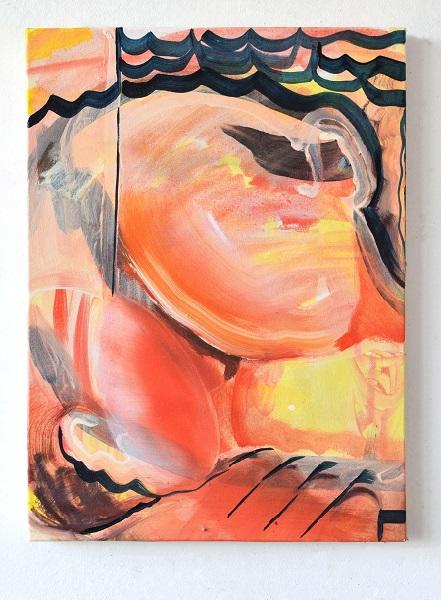
Your works focus on linking our internal emotional world and external reality. Your paintings capture small everyday moments; a reflection, a physical sensation, and develop those ideas into complex visual representations. Can you talk us through the themes in your work and how you explore these through painting?
I have always had a general curiosity in the inner workings of things, be that the mind, functions of the body, change in seasons, fundamental forces, or relationship dynamics, and so my work often focuses on the interconnectedness of these inner workings that in any given moment rub-up against each other, transferring their sensory effects to, and through the body.
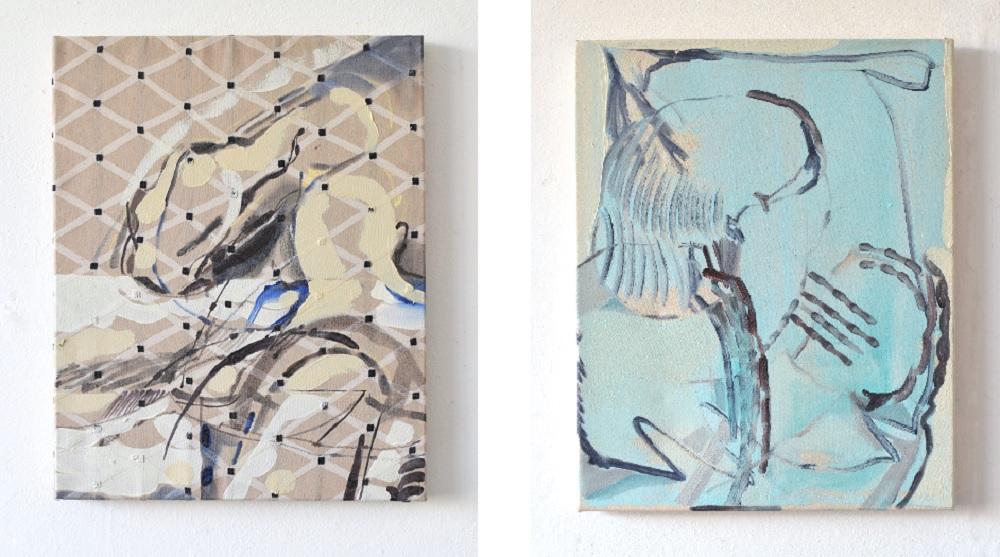
I recently had a solo show titled Innerworkings which was a collection of work that particularly focused on the idea of the body as a membrane, a site where things are passing between the internal emotive world and more tangible outside world. Moving between abstraction and figuration, I embed identifiable pictorial forms from the outside world such as figures, window frames, landscapes and furniture within luminous veils of colour, pattern and gestural marks. Layering in my paintings is a key component to exploring this interconnectedness of the body and the outside world as I think about sensory components such as sounds and smells layering within these everyday scenes. I’m often searching for marks that hold a certain feeling to them, as to visually describe what something feels like within that scenario and so I use lots of different brushes and makeshift tools that give those particular marks.
Lots of my works have an all-seeing, x-ray like vision element to them where we see a slicing through of an everyday moment that on the surface could appear very mundane and as if nothing is happening such as lying in bed, waiting for a bus, or having a bath. When sliced through we see all that is going on in the background of any given moment with the receiving, processing and emitting of these sensory triggers through the body that are constantly occurring. It’s the visualising of bodily sensations that leads me to explore the link between mental health showing up in the physical body and the effects of being isolated from your senses or overly aware of these constant interactions between all things in the world that we move through.
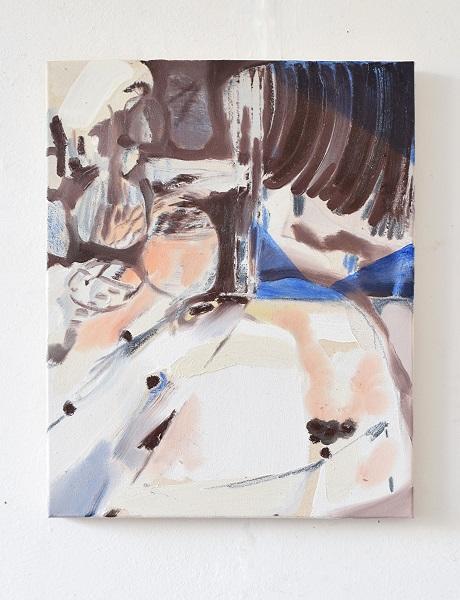
There is playfulness in the way you paint, experimenting with surface and mark making. Can you talk us through your process from initial sketches to finished paintings?
I think that playfulness starts in the making of lots of drawings in and out of the studio as a sort of daily exercise. Acting as a key part of my practice from which my paintings develop, it’s the immediacy and often economy that drawing allows for where lots of ideas can be generated into visual starting points quickly. Sometimes they’re just quick sketches with a few lines carrying enough of a feeling or suggestion of form which I can then flesh out in the painting process. Other drawings are more prolonged exercises where the drawing might end up feeling like the finished ‘thought’ without the need to take it further into a painting. However, it’s usually those drawings that still have an element of unknown to them, being either visually ambiguous forms or spaces that don’t feel as definite which I take to the canvas.
Within my process-driven approach to painting I work with intuition and elements of chance that appear through physical actions of dragging, wiping, and scrubbing paint on and off the canvas to embed the drawing within a more painterly visual ‘noise’ that both dissolves some forms and brings clarity to others.
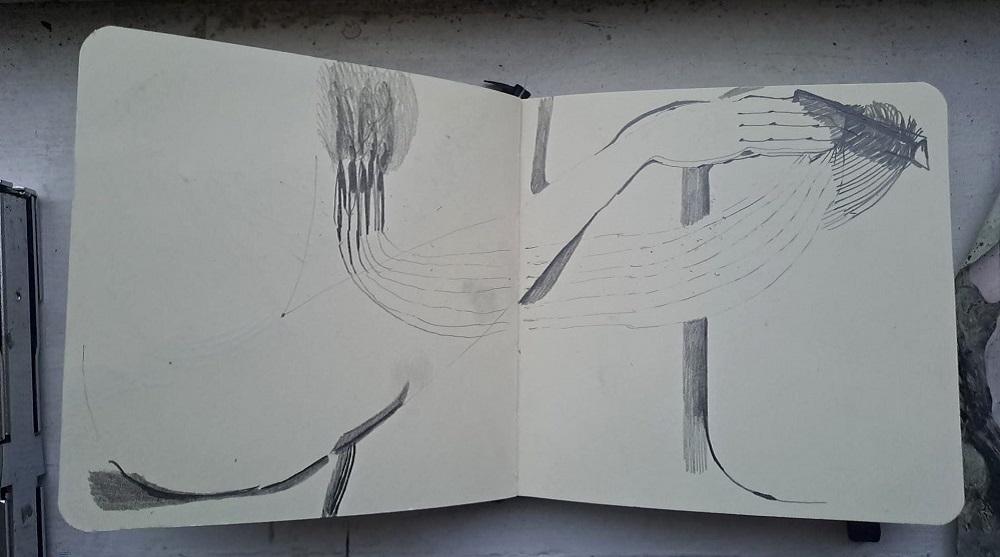
Which other artists have influenced your work and why?
I’m a big fan of artists for whom drawing and mark-making plays a key role in their work, such as Amy Sillman, EJ Hauser and Phoebe Unwin. The play with materiality and capturing the essence of a subject through marks that have such varying qualities I find ever inspiring and their works are key touchstones for my own painting practice.
Justin Caguiat is also an artist that time and again I come back to as a painter who also has an interest in process alongside subject, not treating one as more important than the other but rather letting process lead the subject. I’m fascinated in the way this also often leads to this dance of abstraction crossing over into suggestions of figuration in his work.
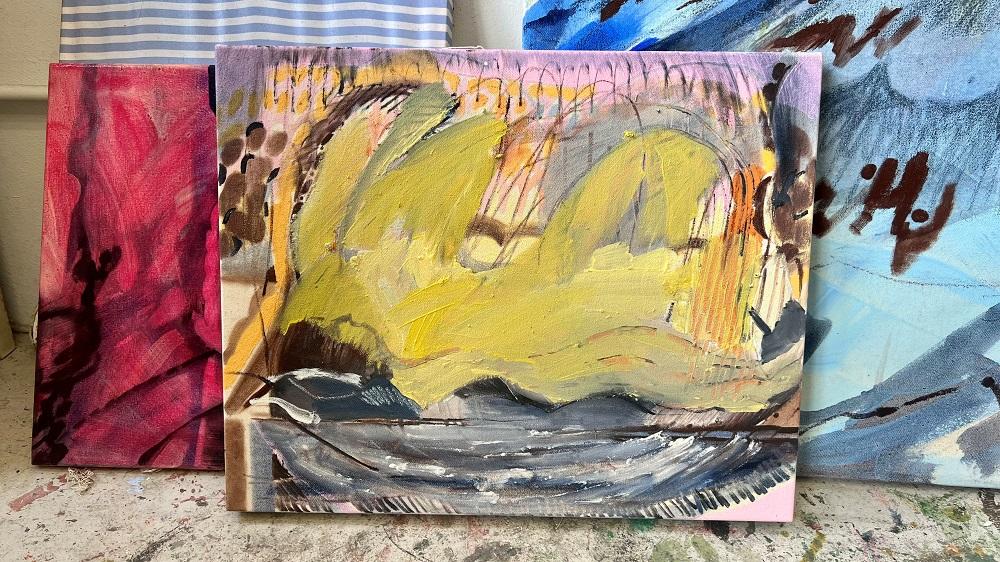
And finally, what’s next for you?
Having just had an exhibition in Brighton recently which helped mark the midway point of my time at Phoenix, I’m back to the studio for the second half of the studio residency reflecting and making some new work ready to show again at our end-of-award show at Phoenix Art Space which will be happening towards the end of Summer. I’m excited to see how my work continues to develop as I continue to push ideas and materials, I’m hoping to make a few more big paintings whilst I have the space!
Thanks Lydia!
See more of Lydia's work on Instagram @lydia_stonehouse_
MEGAN WILLOW HACK
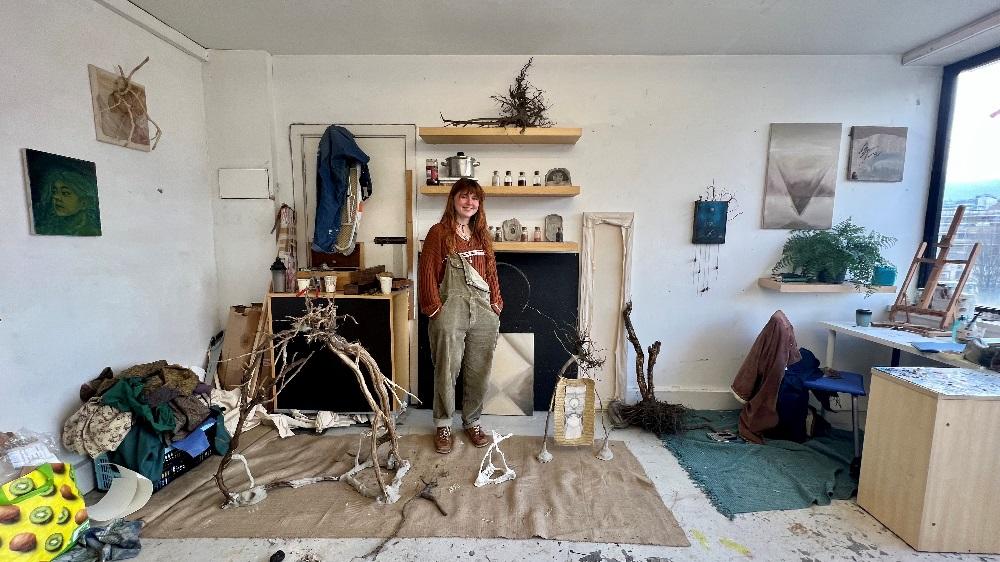
Hi Megan! Firstly, congratulations on receiving the Cass Art & Phoenix Studio Award! How did you feel when you heard you’d been selected by the panel?
Thank you so much, and honestly, I was first shocked which soon turned into so much gratitude! At the time I was closing up my space at uni and was feeling quite sad that I had to start storing my artwork away under beds and in cupboards, so when I found out I had been selected for a studio it was so lovely to know I had a creative space for at least the next year. It really made the transition from uni a lot smoother and an important reminder that my art can exist outside of the education system.
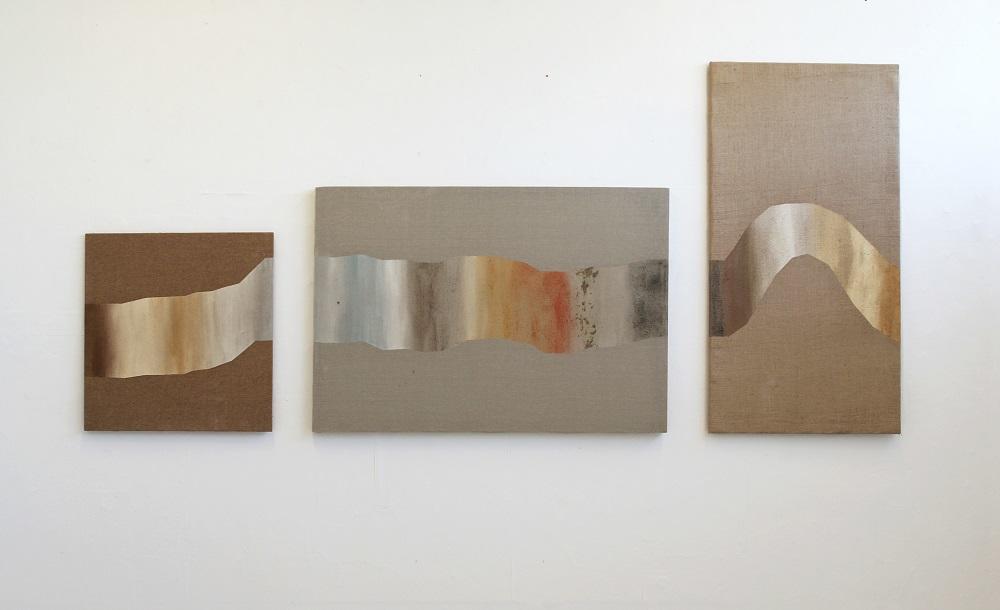
Can you tell us a bit about your creative journey so far? You studied Fine Art Painting at University of Brighton, tell us about your time there and how your work evolved throughout your course.
I am originally from East London and ended up doing an Art Foundation at Central St Martins which is where my love for painting really started. It was an interesting one, because my work and the places I inhabit have always been intertwined. Growing up in the city I would grasp at little pockets of green, and they became sacred and ritualised experiences for me. The tube on the other hand was soul-destroying. This made moving to Brighton the ideal, it had enough of the bubbling creativity I needed, but was bordered by the sea and the South Downs to constantly feed my practice. To begin with, my work was very much involved in the environment I saw, but it soon became the environment I experienced and changed with. When COVID hit in my first year of uni, it felt like the world slowed down, and so did my work, from human time to tidal time, to sunlight and through seasonal change. At that point, I lived in a really confined space without a desk which forced my creativity outside, in the garden and on our allowed walks, which really changed the processes I began to work with. They became more conversations and collaborations with the land rather than comments on it, and this still informs how I interact with my studio space and the outside today.
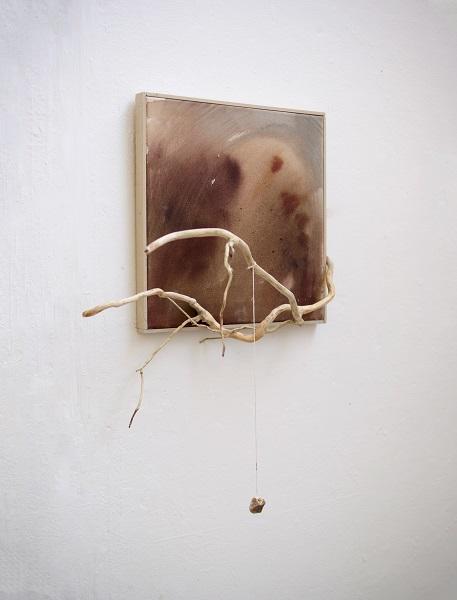
You’re about halfway through your studio residency now, how are you enjoying the space and being part of the creative community at Phoenix Art Space?
For a start, I can’t believe we are halfway through already! It’s been such an important space for me that I can dedicate time to working in, which isn’t related to my job or home life. Being so central also means that I can sit and paint, skate to the beach, come back and make some pigments, go out again and find some material. It’s like the grounding of my practice that I can come back to, and while my work is so transient, to have a constant, physical, hub has been vital. I also love sharing my studio with Lydia and even when she’s not there, to see her own work changing and growing has been lovely! I’ve met a few artists who also have studios at Phoenix and started to enter a new network of people who exist in the community which has really helped my sense of belonging in Brighton (and another reason why I am going to stay).
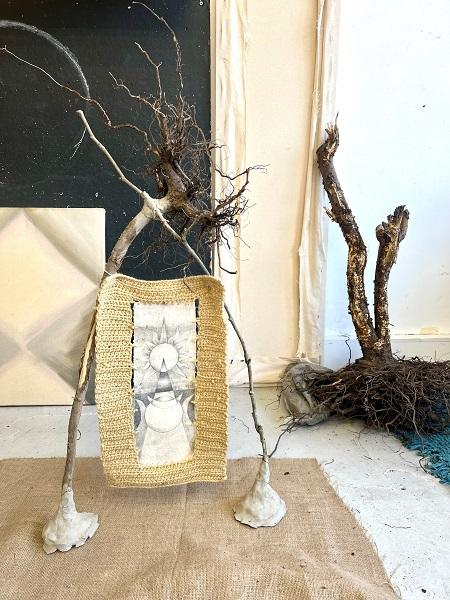
Your works focus on environmental issues, and you make your own organic art materials. What made you begin to create your own materials, how has it changed your work and what challenges have you come across in the process?
Ironically, my work sort of naturally flowed in this direction because of circumstance. The Anthropocene Epoch not only affecting the environment but the economic, social and political- defining both the way we live and the way I work. I found that alternative methods to ‘fine art’ processes tended to be more environmentally friendly, accessible and affordable - I started to develop film with seaweed and seawater and make paints from ground pigments and things that I could find. This helped me create a practice that was sustainable in all senses of the word and start using processes that allowed me to connect with the materials in a more holistic and tactile way. As I mentioned earlier, COVID was really a catalyst for my eco-work and I feel, as for a lot of people, the natural world became sanctuaries of healing and connection. My final degree project was called ‘Oikos’, which is ancient Greek for house, home and family which became a metaphor for the relationships we can nurture with Earth-work. It comes with its own challenges though for sure - one that I’m struggling with a bit at the moment is seasonal change, where everything dies down in the winter and colours get muddied. But this is also highly rewarding, as I am learning to honour my practice as it ebbs and flows in this way and feels more aligned with natural rhythms.
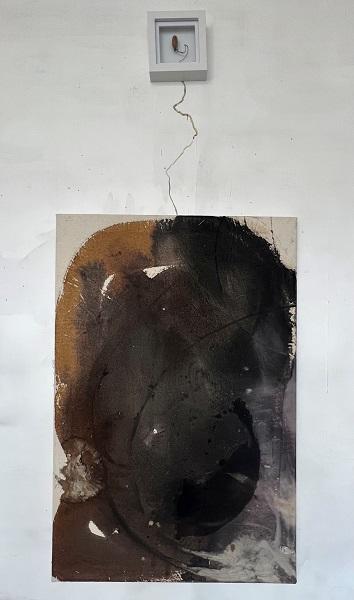
Can you talk us through your process of creating your own pigments and inks?
As I started working with earth pigments on walks they are all foraged and capture the specific landscape around me. My whole process has become ritualised, from the moment I go on a walk, to the things I encounter along the way, to the science lab I have created in my studio to extract colour. They really are saturated in ecological-time with their own life span which is completely out of my control. This aliveness and unpredictability draws me to this way of working and why I tend to say I work with and collaborate with the natural world rather than depicting it. I sort of just facilitate the chance, honouring the transient cycles of Earth as pigments change hues in the sunlight and images can fade away. My favourite this year has definitely been working with the oak trees, they feel like such magical beings to honour, and through the process of making iron gall ink I was tapping into a whole history of natural pigments having been used as the ink of manuscripts for centuries. The colour itself is also so rich and you can get some beautiful earthy browns all the way to deep blacks when you add iron and with the amount of tannins they seem to be pretty lightfast.
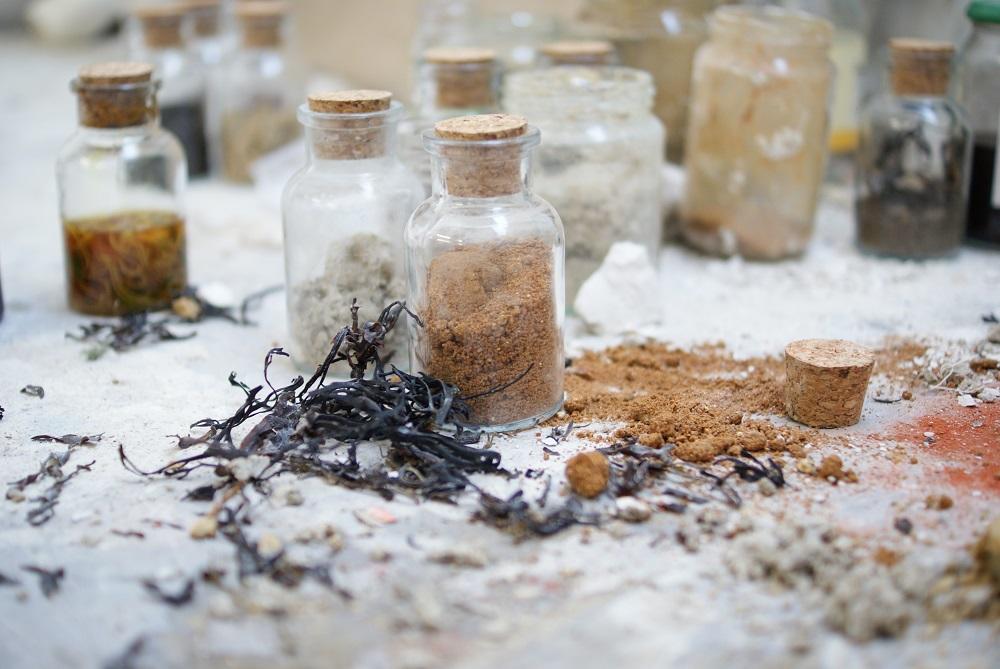
Beyond University, you’ve had some great success already, taking part in a residency, tell us about that.
I am currently writing this from a windowsill overlooking the Afon Mawddach in Wales selected as a Graduate Artist for the Mawddach Residency! I have also been selected by the British Pavilion for Venice Biennale Fellowship this summer where I will be researching the relationship between nature vs culture with the Venice Lagoon. Honestly so grateful for the opportunities and appreciation for the work I do! It’s really interesting to be enabled to move my work outside of the English landscape and I am excited to see how experiencing these new terrains will feed into my paintings.
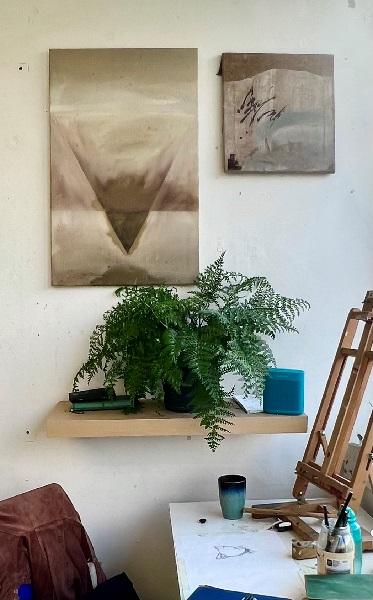
And finally, what’s next for you?
I don’t have any formal plans but excited to see what this year will bring. I’ve already made some beautiful coloured ink from Gorse up here in Snowdonia and the ferns have started to unfurl which means green! I have also sown the seeds for a dye garden as I am still in search for a blue, so a lot of woad and indigo seedlings are popping up. At this point in time, I’m really enjoying not having deadlines, seeing my work evolve naturally, opportunities coming my way and reclaiming my practice as both artistic and spiritual.
Thanks Megan!
See more of Megan's work on Instagram @megan.w.hack
Feeling inspired?
Read our interviews with the Alumni from the Cass Art & Phoenix Studio Award Sophie Hulf & Jessie Yates, Miranda Forrester, Hattie Malcomson and Liberty Cheverall.

